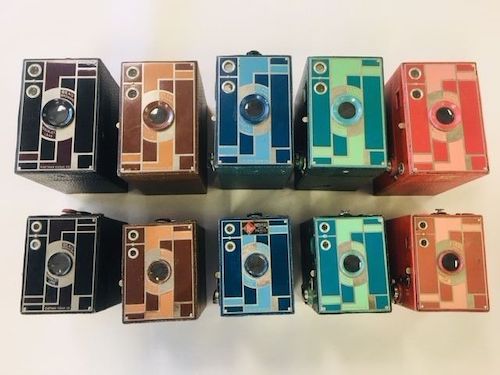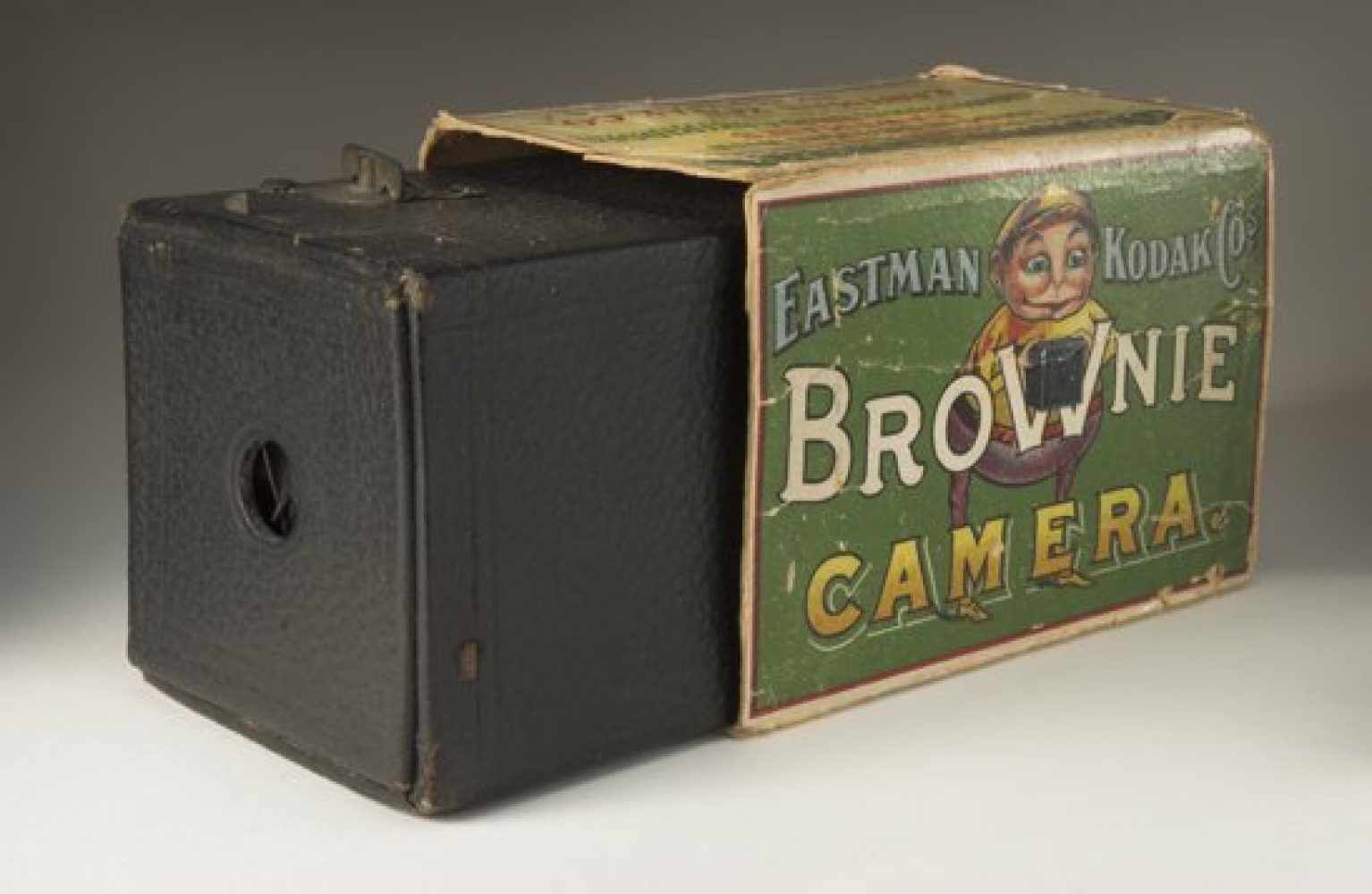Photography today is such a big part of our everyday lives. Most people have cameras in their pockets, in the form of their smartphone and because of this, photography has never been more accessible or enjoyable.
The growth of technology throughout the last 100 years has led us to a point in history where we can all have easy access to cameras, and we can all capture photography whenever and wherever we choose to. But it hasn’t always been like this, in fact, when photography was first invented it was very much an activity and privilege for the middle and upper classes. If you didn’t have money – it was unlikely you’d ever get to experience a camera!
That was, until George Eastman.
George Eastman changed the course of photography’s history and journey. He made it accessible and affordable for the millions of people who couldn’t afford the bigger cameras, or couldn’t afford to visit a trained photographer.
What he set in motion with the invention and production of the Box Brownie camera was the democratisation of photography. And overnight, photography went from being something solely reserved for trained professionals – to something available to anyone with a dollar to spare.
It was during February of 1900, that Eastman’s company, Eastman Kodak, brought their point-and-shoot, affordable, hand-held camera to the public’s attention. The camera was unlike anything before it – it was simple to use (simple enough for a child!) and it only cost $1 to purchase. It was the first camera to make photography available to the masses – and remains an iconic and hugely important part of photographic history.
Box Brownie: An instant success
Because of the camera’s simplicity and accessibility, people were excited and eager to try the camera themselves. It was a huge talking point and one of the biggest trends of the time. People were desperate to get their hands on the Kodak “Brownie” camera – and more excited to try taking photographs of their own.
Within the first year, a huge 100,000 of them were purchased by the public – and the camera was hailed as a huge success. More people than ever before were capturing their families, friends and personal moments in photographs, and many photographs surviving today from that time period were captured using the Box Brownie camera.
Why was it called a Box Brownie?
The box part of the name came from the shape and design of the camera – which was quite literally a brown box.
The name also partly came from where the camera was designed and manufactured. This was down to a man called Frank Brownell of Rochester, New York – so perhaps the name was partly in thanks and recognition to him too.
At the time, there was also a popular children’s cartoon of the same name – and the marketing team for the camera thought it would be a smart idea to give the camera a name that communicated fun and childlike characteristics. They wanted to show how simple and easy to use the camera was, and this seemed like a good way to do so.
How did it work?

The Brownie camera was quite simply, a rectangular cardboard box, covered in fake-leather with nickel fittings. The device wasn’t designed to be overly sturdy (especially at the $1 price tag).
The camera had a simple meniscus lens, and captured 2 1/4-inch square pictures on a 117m roll film. To take a “snapshot,” all you needed to do was pop in the roll of film, close the Brownie’s door, hold the camera at waist height and turn a switch. There was a little viewfinder on the top for you to look through, to ensure you were capturing the right angle / scene.
Kodak Eastman really wanted to keep the process as simple as possible.
The Cost and Affordability
As we’ve mentioned, Kodak Eastman began selling the Brownie Box camera for only $1. This was amazingly affordable, especially for a camera you could function and use without the help of a trained professional, and without taking lessons or courses to learn how to use it. The price-point is what made the camera a huge success, and for only 15 cents extra, you could also purchase a six-exposure film cartridge to go inside.
Customers could also send their rolls of film into Kodak to process for them, which was revolutionary at the time (and something that later caught on in the 60s, 70s, 80s and 90s) where many retailers offered film processing services.
The processing fee for the Brownie photos were 10 cents a photo, plus 40 cents for developing and postage. Again, this opened up the activity to many people, as they didn’t need to learn how dark rooms worked, or buy expensive equipment or chemicals to develop their photography at home.
Not just for Adults
Because of how easy the entire process was, and how affordable the camera and photo development was, Kodak Eastman knew this was an opportunity to bring a whole new generation into photography.
As we mentioned briefly earlier, they were extremely keen to market the camera towards children. This helped them convince people how easy the device was to use, but it also brought in a fresh audience of young people who would later grow up loyal to the Kodak brand.
Here’s a snippet from a promotion poster for the Brownie camera:
“This is just the camera you ought to have, to get pictures of your games – the places you go this summer – your chum making a boat and the old swimming hole where you sailed it; everywhere there’s fun, there’s a good subject for a picture – perhaps to recall some playmate when you have gone out into the big world and look back upon these good times. Then there is sister – her birthday party on the lawn – at play with the dollies; in these is a story for the Brownie that will always be interesting”
The Box Brownie camera is an iconic and hugely important part of photographic history, and we hope this article has given you a glimpse into why and how it changed photography for the better. Next time you take a quick snapshot on your smartphone, remember the long historical journey required to get to this point!


Leave A Comment